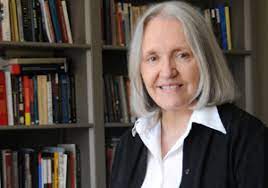Sassen, Saskia

Bio: (1949-) Dutch-American sociologist. Saskia Sassen received her Ph.D. from the University of Notre Dame in Indiana and has taught at several universities in the United States and other countries. He currently teaches at Columbia University. She is best known for her study of globalization within which she is most concerned with the global economy, immigration, and global cities.
Sassen introduced the notion of the global city into sociology in her book The Global City: New York, London, Tokyo (1991). Global cities are the focal points of the organization of the global economy; they are centers of financial firms and firms specializing in special services; they are innovation production centers in the most profitable industries, and they are large markets for products and innovation. These cities are globally integrated, with each other. They have undergone major changes in the structure of economic branches, spatial organization, and social structure. Global cities differ from earlier cities in that the modern economy has a greater need for centralized control and management. These cities are centers of financial and banking innovation and services, marketing, accounting, and legal services, and the largest users of these services are transnational companies. These economic sectors represent the largest source of income and economic power of global cities.
Transnational companies, even if their center is not in one of the global cities, are becoming more and more attached to them. The networked relations of global cities are a source of global control that separates these cities from the scope of control of the countries in which they are located. At the same time, as these cities become more networked and dependent on each other, so they become more separate and independent from the state. Global cities usually have large and culturally diverse immigration from all over the world, so this multiculturalism makes them even more global. When Sassen set out to explore global cities, she singled out New York, London, and Tokyo, and in her book Sociology of Globalization (2006) written 15 years after the first book, she estimated that there were about forty global cities.
Sassen singles out three levels where changes are taking place in the age of globalization: local, state, and global. At the local level, great socio-economic changes are taking place, as many old industries and areas in which they were concentrated are declining, and new areas with new and more profitable industries are strengthening. The biggest change, especially in more developed countries, is the decline in the importance of classic industries - mining, textile production, production of consumer goods, machinery industry, and the like. These jobs, which previously gave durability and security of employment and income to manual workers, as well as the possibility of creating influential unions, are disappearing and are being replaced by insecure and poorly paid jobs in service industries.
These changes, at the state level, lead to the creation of increasing economic differences between regions and individuals, which conditions migration to cities and areas experiencing economic growth. As global cities rise, so do other, less developed areas. At the global level, there are growing inequalities between the countries of the center and the countries of the periphery; there is an increase in immigration from the periphery to the center; and the weakening of the influence of nation-states in relation to global cities. Nation-states do not lose their significance completely, but the concept of sovereignty and territoriality is changing crucially. Sassen calls this process "deterritorialization of national territory".
Sassen believes that global and partially de-nationalized classes are being formed and singles out the following such classes: transnational corporate professionals and executives; the most important civil servants involved in global governance; as well as unskilled workers who are part of the global production network. As the upper and working classes become more globalized, the middle class remains less globalized and more nationally entrenched. International corporations, financial organizations, governments, and regulatory bodies of nation-states form the operational infrastructure of corporate economic globalization and are run by representatives of two higher global classes. Transnational corporate professionals and executives possess the education and social capital and are highly interconnected and mobile. The transnational network of the most important civil servants is very connected with transnational professionals and managers, and their main function is to enable the deregulation of the national economy and markets. These two global classes make up what Sassen calls the "global elite".
Fields of research
Capitalism City Control, Social Corporations Economy Elites Globalization Immigration Industry Inequality, Social Innovation Management Market Marketing Middle Class Multiculturalism Social Capital State Work Working ClassTheoretical approaches
Globalization ApproachMain works
The Mobility of Capital and Labor: A Study in International Investment and Labor Flow (1988);
The Global City: New York, London, Tokyo (1991);
Cities in a World Economy (1994);
Losing Control? Sovereignty in an Age of Globalization (1996);
Globalization and its Discontents (1999);
Guests and Aliens (2000);
Territory, Authority, Rights: From Medieval to Global Assemblages (2006);
A Sociology of Globalization (2006);
Expulsion: Brutality and Complexity in the Global Economy (2014).

